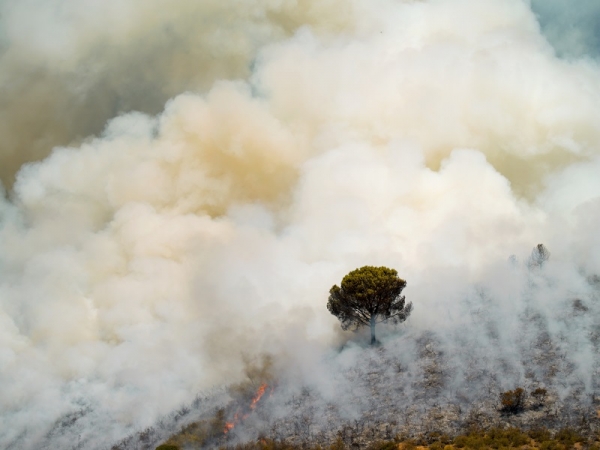Although the number of forest fires has, in fact, decreased in recent years, factors such as climate change and changes in land use (such as the abandonment of land in rural areas due to migration to cities) have led to an increase in the frequency of major forest fires, which attract the most attention and affect the environment the most. Because of this, due to their unpredictability and, above all, the environmental consequences they can have, there are mixed opinions regarding the use of fire to manage forests. Evidence suggests that fire, used in a controlled way, and applied within a pre-established plan, is an effective preventive forest management tool, as the properties of soil, indicative of its functionality, are altered only slightly, or even improved, at least in the short term. These are the findings of the Edaphology Unit at the María de Maeztu Unit of Excellence – University of Cordoba (DAUCO) Department of Agronomy and the UCO's Forest Fire Laboratory, published in an article appearing in the journal Science of the Total Environment.
With support provided by the Andalusian Forest Fire Extinguishing Service (INFOCA), the research team carried out a controlled and high-intensity burning with a demarcated perimeter and flames of over two meters (sometimes reaching 10), in an area of Los Boquerones (Villaviciosa de Córdoba), featuring Mediterranean scrub and with gum rockrose as its main species. After collecting soil samples before the fire, two hours after it, and eight months later, the analyses found that just after the fire there was an increase in properties such as pH (more than two points), the availability of nutrients for plants (phosphorus, nitrogen and micronutrients such as zinc and iron), fertility, biological properties, and the electrical conductivity of the soil. After eight months, with day-to-day environmental conditions influencing the soil, evaluations indicated that alterations of its physical-chemical and biological properties were recovering pre-burn values. In this way, "controlled burning does not have a negative effect on the soil in the short term, such that this type of tool can be used without generating serious effects," according to researcher Elisa Vega Martínez, on whose Master's thesis the study is based.
This is key because forest soils "are the basis, sustenance and beginning of life," in the words of UCO researcher Antonio Rafael Sánchez-Rodriguez. And, due to its reduced depth, fire has a direct effect on them due to high temperatures, the burning of organic material, the accumulation of ash, and erosion. Thus, in contrast to uncontrolled fire, there is another type of beneficial one: of a controlled nature, and with a certain objective (such as fuel reduction, the generation of grasslands, or to ensure biodiversity). These, the research team has verified, do not affect (significantly, negatively) soil health.
Reference:
Elisa Vega-Martínez, Juan Ramón Molina, Vidal Barrón, Francisco Rodríguez y Silva, María del Carmen del Campillo, Antonio Rafael Sánchez-Rodríguez, “Spatio-temporal assessment of soil properties immediately and eight months after a high intensity-controlled burn in the south of Spain”, Science of the Total Environment, Volume 898, 2023, 165368, https://doi.org/10.1016/j.scitotenv.2023.165368.


